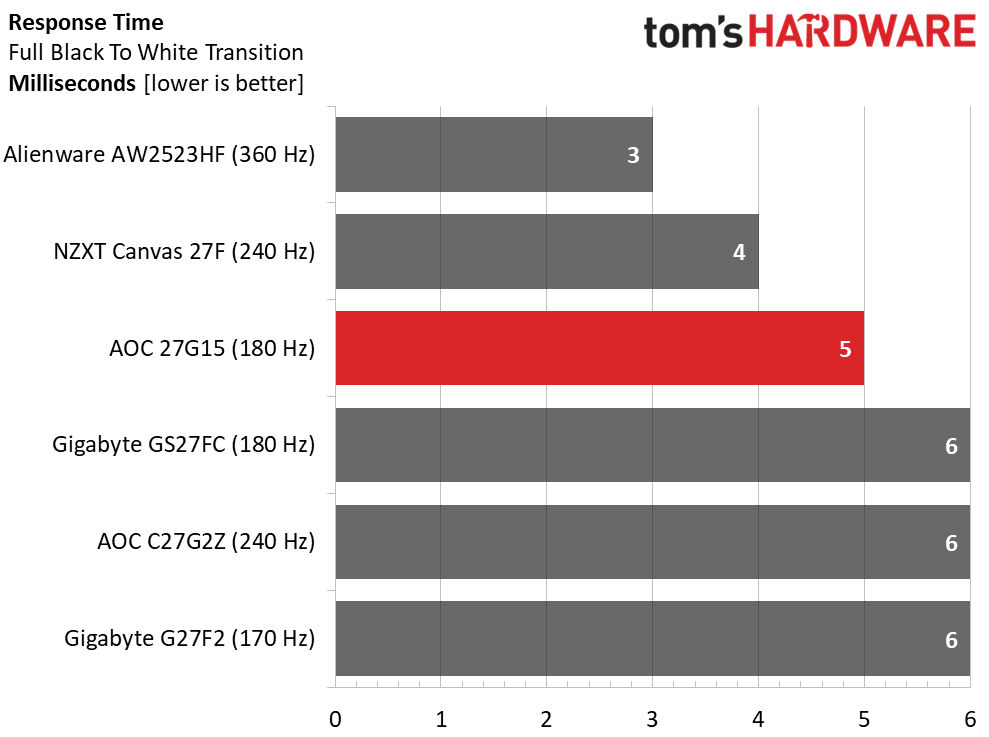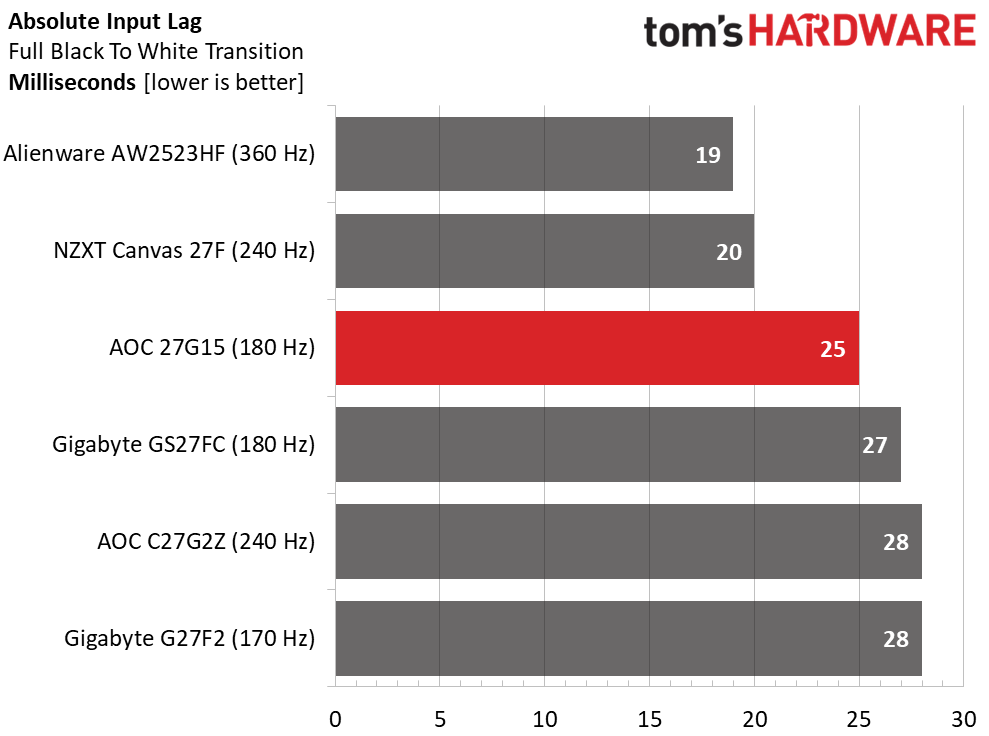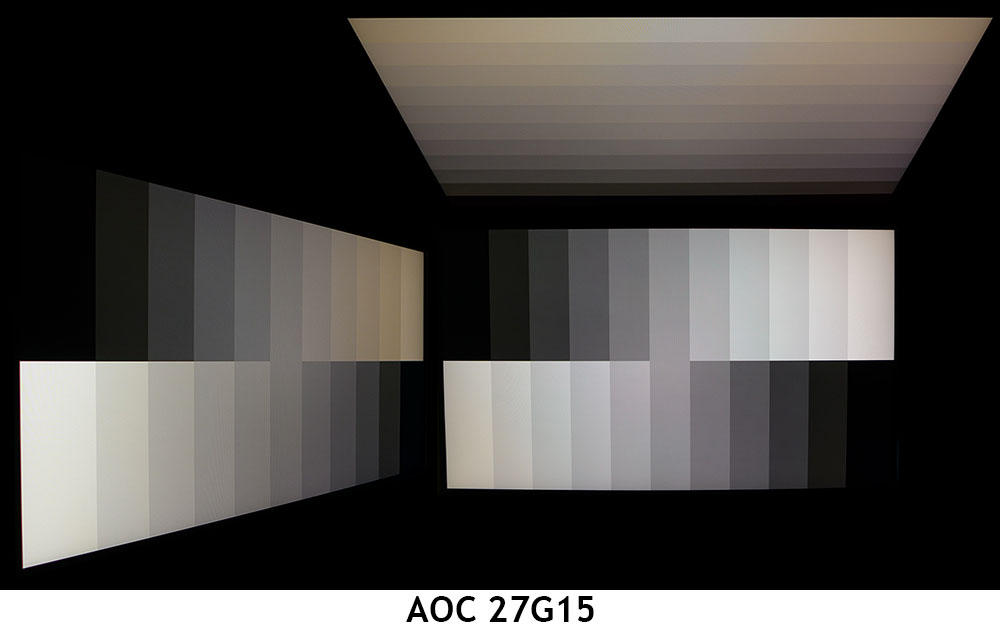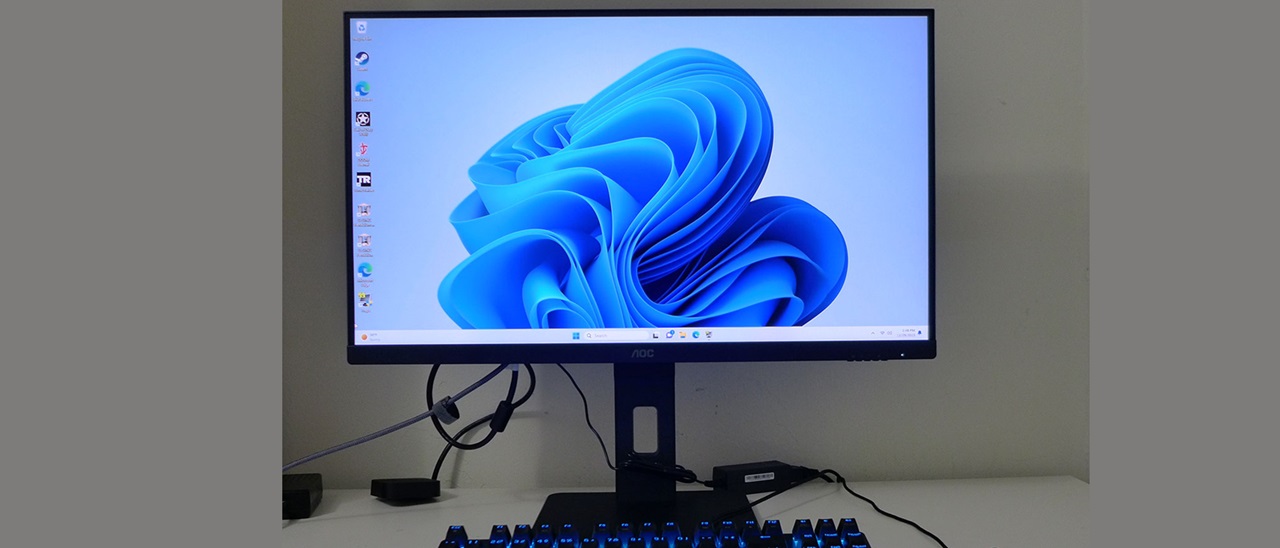Why you can trust Tom's Hardware
To compare the 27G15’s performance, I rounded up FHD resolution screens, mostly 27-inch but one 25, that run from 170 to 360 Hz. The results show just how close these displays can be even though the price differences are large. We have Alienware’s AW2523HF, NZXT’s Canvas 27F, AOC’s C27G2Z and Gigabyte’s G27F2 and GS27FC.
Pixel Response and Input Lag
Click here to read up on our pixel response and input lag testing procedures.


The 27G15 is one of the quickest FHD panels I’ve tested at the 170-180 Hz level. In the response test, it even beats the other AOC, which runs at 240 Hz. This is a seriously quick panel and that means it’s super smooth. Only the AW2523HF is significantly faster, and it’s three times the cost.
In the lag test, the 27G15 again proves to be very quick, with just 25ms total. That’s seriously impressive and it puts the monitor in contention with many 240 Hz models. Notice at the top that there is only 1ms difference between the Alienware and the NZXT even though their refresh rates are 120 Hz apart.
Test Takeaway: There are a few monitors that deliver a lot of smoothness without super high refresh rates and the 27G15 is one of the best examples. Even with overdrive turned off, it renders excellent motion resolution. Since it’s FHD, high frame rates are easy to achieve with a budget gaming PC or console. Input lag is also close to what you’ll find at 240 Hz. You can pay a lot more for a tiny bit of extra speed but visually, the difference will be small. The 27G15 is a true performance bargain.
Viewing Angles

VA isn’t the best technology for off-axis viewing, but the 27G15 is better than many of its competitors. There is no reduction in brightness at 45 degrees to the side, only a slight shift to green and red. Gamma remains constant, so there is no loss of detail either. The top view is poor, like nearly every LCD on the planet. This is excellent performance, doubly so when cost is considered.
Screen Uniformity
To learn how we measure screen uniformity, click here.
Get Tom's Hardware's best news and in-depth reviews, straight to your inbox.

At 11.33% deviation, my 27G15 sample had some visible hotspots in the corners of the screen. In content, they were only apparent in the darkest content when all room lights were turned off. This was a minor issue that is forgivable at this price point. Your 27G15 example may perform better or worse than mine.
MORE: Best Gaming Monitors
MORE: How We Test PC Monitors
MORE: How to Buy a PC Monitor
MORE: How to Choose the Best HDR Monitor
Current page: Response, Input Lag, Viewing Angles and Uniformity
Prev Page Features and Specifications Next Page Brightness and Contrast
Christian Eberle is a Contributing Editor for Tom's Hardware US. He's a veteran reviewer of A/V equipment, specializing in monitors. Christian began his obsession with tech when he built his first PC in 1991, a 286 running DOS 3.0 at a blazing 12MHz. In 2006, he undertook training from the Imaging Science Foundation in video calibration and testing and thus started a passion for precise imaging that persists to this day. He is also a professional musician with a degree from the New England Conservatory as a classical bassoonist which he used to good effect as a performer with the West Point Army Band from 1987 to 2013. He enjoys watching movies and listening to high-end audio in his custom-built home theater and can be seen riding trails near his home on a race-ready ICE VTX recumbent trike. Christian enjoys the endless summer in Florida where he lives with his wife and Chihuahua and plays with orchestras around the state.
